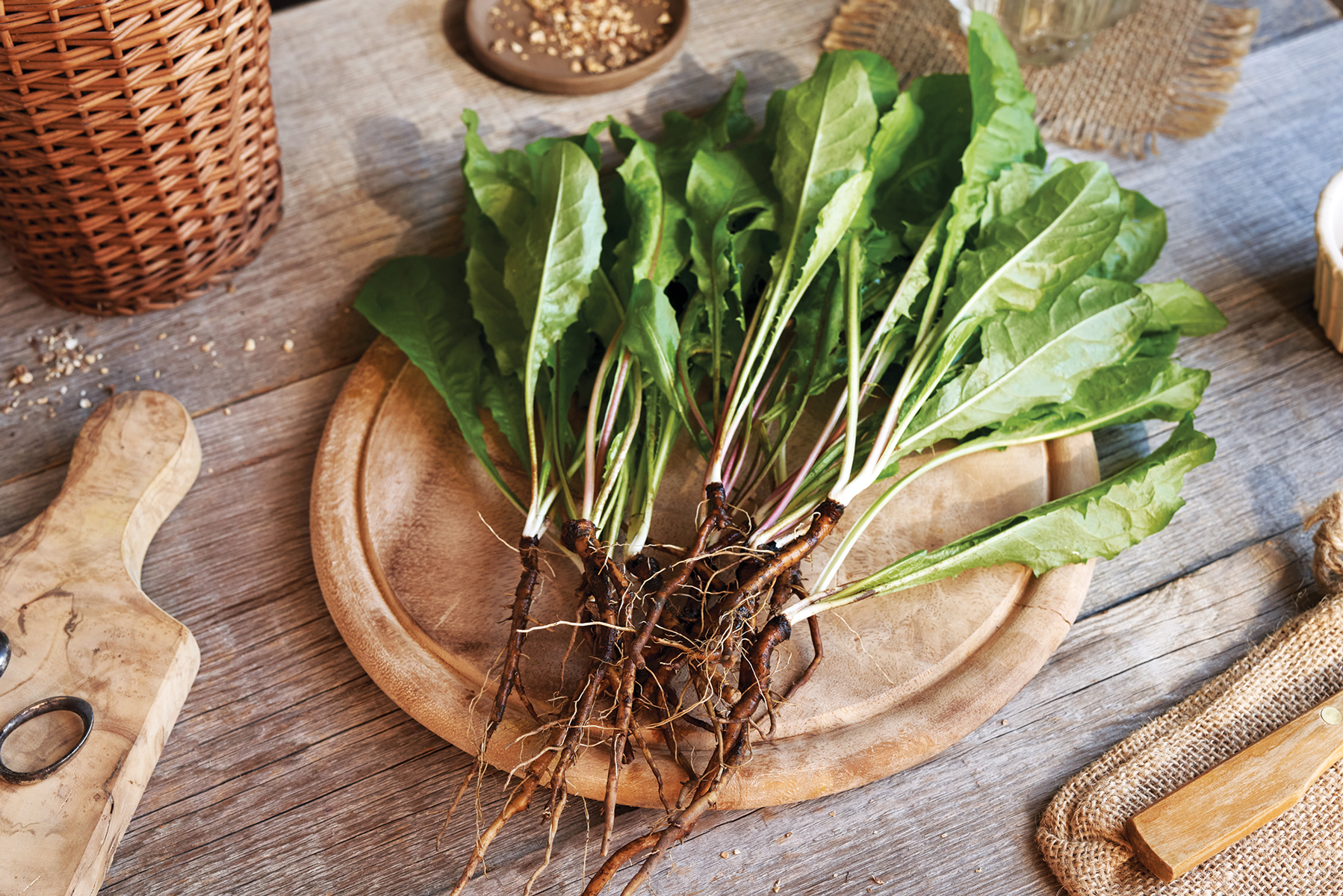What are the medicinal benefits of my backyard weeds?
Herbal wisdom includes plenty of stories lauding the potential benefits of herbal weeds, and there’s also some clinical evidence that they work. Let’s look at five of my favorite beneficial weeds and see what science and tradition tell us about them.
Dandelion Root (Taraxacum officinale)
Dandelion root contains a prebiotic constituent called “inulin,” which acts as a food source for probiotic bacteria in the gut. Taraxasterol is another constituent present in dandelion roots, which scientific research has found to have anti-inflammatory activity.
In herbal tradition, dandelion root is used as a bitter to help enhance digestion and support liver function. Animal research has demonstrated that constituents found in the roots have hepatoprotective (liver-protective) effects.
In a human pilot study, dandelion leaf was found to have diuretic effects.
Dandelion leaf and root extracts are readily available in tincture form, and the leaves and roots themselves can also be used in food.
Prepare dandelion tea based on which plant part you’re using. If you’re working with the leaves, steep 1 to 2 teaspoons of the dried leaf per cup of boiling water for about 15 to 20 minutes. If you’re working with the roots, decoct them: Place the washed, chopped root in a small saucepan and cover with water. Simmer on low for 10 minutes, and then turn off the heat and let the root steep for 30 to 45 minutes.
Plantain Weed Medicinal Uses (Plantago spp.)
Plantain leaf and extracts have demonstrated anti-inflammatory and hepatoprotective effects.
The leaves can support skin as it recovers from a wound. Animal research has found that when plantain is combined with aloe vera gel or used alone in an ointment, it helps skin heal faster.
A human study found that consistent use of a plantain syrup helped reduce pain severity and other symptoms in cancer patients with radiation-induced oral mucositis.
I often reach for plantain leaves when I’ve been bitten by an insect or brushed up against stinging nettle. Plantain soothes my skin faster than anything else I’ve tried. Work with plantain by applying a leaf poultice to irritated skin or a bug bite or sting. The leaves’ cooling, anti-inflammatory effects will provide relief and reduce redness. Alternatively, infuse plantain leaves in olive oil or sunflower seed oil that you can later use to make salves or ointments for your herbal first-aid kit.
To make plantain tea, steep 1 to 2 teaspoons of the dried leaf per cup of boiling water for about 20 minutes. It has a green, herbaceous flavor and can help soothe irritation in the mucous membranes along the digestive tract.
Red Clover (Trifolium pratense)
Clinical studies have found red clover isoflavone supplementation can help reduce the severity of menopause symptoms.
Animal research suggests red clover may have positive effects on cholesterol levels and gut microbiome health.
In a recent rat study, red clover supplementation was found to have positive effects on sperm count, motility, and viability in diabetic animals.
To make red clover tea, steep 1 to 2 teaspoons of the dried leaf and flower per cup of boiling water for 20 to 30 minutes. Make a quart of tea at a time and sip it throughout the day for best results.
Yarrow (Achillea millefolium)
For women who had recent episiotomies, yarrow ointment applied twice daily was found to reduce pain levels, redness, edema, and bruising discoloration.
Long-term use of yarrow has been associated with lower rates of relapse and more time between relapse episodes in people with MS. The same study that demonstrated this noted lower depression scores and other positive clinical measures.
I frequently use yarrow in my first-aid products to reduce pain and inflammation, slow bleeding, and soothe the skin. The leaves and flowers can also be taken internally via herbal tincture or tea.
To make yarrow tea, steep 1 to 2 teaspoons of the dried flowers and leaves per cup of boiling water, covered by a plate, for about 20 minutes. The flavor can be an odd combination of bitter and floral, so you may wish to combine the yarrow with tastier herbs to make it more palatable.
Chickweed Herb Benefits (Stellaria media)
In India, people make decoctions and poultices with chickweed leaves and apply them topically to reduce swelling, slow bleeding, and support skin healing.
Some of chickweed’s constituents have demonstrated anti-inflammatory activity.
Animal research suggests that chickweed extracts may help reduce anxiety symptoms and support healthy blood sugar regulation. One rat study also indicates chickweed tea could have positive effects on the cardiovascular system for diabetic individuals.
Chickweed contains several different kinds of minerals, as well as vitamin C and other nutrients. The foliage and flowers are edible, though they don’t have much flavor.
To make chickweed tea, steep 1 to 2 teaspoons of the dried leaves per cup of boiling water for about 20 minutes. Try adding a pinch of peppermint leaf to brighten the flavor.
